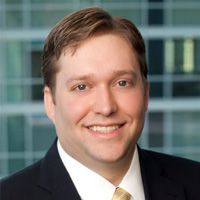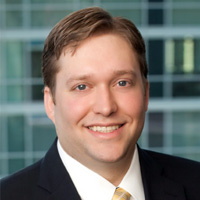Medical Professionals: It’s Not Too Late to Save on Your Taxes
If your income rebounded in 2021, consider these four investment and tax-saving moves now. While most of these strategies apply to 2022 and beyond, one could even reduce your tax bill for 2021.


After experiencing financial hardships in 2020 caused by COVID-19, 2021 was a banner year for many medical professionals. I’ve spoken with several dentists who saw their income grow 20% or more last year, rebounding nicely after enduring temporary office closings and patients canceling or delaying their appointments due to the pandemic.
For these professionals, this situation presents a unique opportunity: how to best invest this windfall and still minimize their 2021 tax bill. And because doctors and dentists – as business owners – can wait until Sept. 15 if they extend their tax returns to file their 2021 business tax returns, there is plenty of time to make the best use of any extra income while still cutting taxes.
Here are four recommendations on steps to take now:
From just $107.88 $24.99 for Kiplinger Personal Finance
Become a smarter, better informed investor. Subscribe from just $107.88 $24.99, plus get up to 4 Special Issues

Sign up for Kiplinger’s Free Newsletters
Profit and prosper with the best of expert advice on investing, taxes, retirement, personal finance and more - straight to your e-mail.
Profit and prosper with the best of expert advice - straight to your e-mail.
Establish a Cash Balance Pension Plan for 2021
Many medical professionals don’t know they have until they file their business return, including extensions, to open and fund a cash balance plan for the 2021 tax year. For example, in 2022’s first quarter, I opened a cash balance pension plan for a client who was able to save an additional $200,000. This decision will save them a substantial amount of money on their 2021 tax return.
Like a traditional pension, a cash balance plan provides business owners with the option of a lifetime annuity. However, unlike pensions, cash balance plans create an individual account for an owner. These plans are an attractive option, allowing medical professionals to potentially save a substantial amount for retirement annually in a tax-deferred retirement savings account.
Once the owner reaches retirement, they have the option of taking these savings in an annuity spread out over several years or as a lump sum. For those who saw business rebound in 2021, it’s a great tool to catch up on retirement savings while paying less in taxes.
Upgrade Your Retirement Plan for 2022
Many medical professionals use the same retirement plan strategy year after year without much thought, but now is a great time to consider changing the plan’s design to allow more savings. For example, if you only have traditional individual retirement accounts (IRAs), consider putting a 401(k) plan in place.
With an IRA, doctors and dentists (and anyone else) can save $7,000 into a traditional IRA if 50 or older. While there are other differences and considerations, a 401(k) retirement plan offers higher contribution limits for participants of up to $67,500, including profit sharing and potential catch-up contributions for 2022. While this won’t save you on your 2021 tax bill, you can utilize the excess cashflow earned during 2021. There are many different retirement plan designs, so speak with your advisory team about all the options.
Make the Most of Your Equipment Expenses
Through the end of 2022, federal tax law allows medical professionals to depreciate 100% of their spending on new equipment, which reduces taxable income. Starting in 2023, the bonus depreciation drops to 80% with an additional 20% drop annually until you can’t take any bonus depreciation in 2028.
If you plan to buy new equipment in the next few years, consider accelerating plans by purchasing it this year to take advantage of the 100% bonus deprecation. Of course, don’t make any unnecessary investments – if it isn’t something you planned to purchase already, don’t do it.
Fund Future Charitable Contributions by Setting Up a Donor Advised Fund
Many medical professionals contribute thousands of dollars annually to their favorite nonprofit organizations. For those who plan to continue making donations for several years – and desire to get a bigger tax break in one tax year – I recommend setting up a donor-advised fund (DAF).
A DAF allows anyone to contribute and receive a charitable deduction in one year, but to spread out the distribution to one or more charities over future years. By doing so, a person will receive a tax deduction at the time of the gift while also making a generous donation.
For example, a medical professional who usually gives $20,000 annually could fund three years of charitable giving by setting up a DAF and contributing $60,000 into the DAF and take the tax deduction in the current year. While the deduction helps offset the high income – thereby lowering taxes – the money can be dispersed over time.
This strategy works particularly well in the year a medical professional sells their practice or has another large one-time tax event. After they retire, their taxable income and itemized deductions are significantly lower so they often use the generous federal income tax standard deduction instead.
2021 was an unusual year for many medical professionals who own their own practices. Taking one of these four steps can save thousands of dollars in taxes while contributing a substantial amount to retirement accounts for future financial independence.
Profit and prosper with the best of Kiplinger's advice on investing, taxes, retirement, personal finance and much more. Delivered daily. Enter your email in the box and click Sign Me Up.

Jason Cross is a wealth adviser at McGill Advisors, a division of CI Brightworth. He works with high-net-worth families in investment management and estate planning and helps business owners develop financial plans to sell their businesses. Jason is a Certified Financial Planner™, Certified Trust and Financial Advisor and an active member of the Georgia Bar Association.
-
 Don't Wait Until January: Your Year-End Health Checklist to Kickstart 2026
Don't Wait Until January: Your Year-End Health Checklist to Kickstart 2026Skip the fleeting resolutions and start the new year with a proactive plan to optimize your longevity, cognitive health, and social vitality.
-
 Premium Rewards Cards: More Perks, Higher Fees
Premium Rewards Cards: More Perks, Higher FeesSome issuers are hiking the annual fee on their flagship luxury credit cards by hundreds of dollars. Are they still worth using?
-
 3 Trips to Escape the Winter Doldrums, Including An Epic Cruise
3 Trips to Escape the Winter Doldrums, Including An Epic CruiseThree winter vacation ideas to suit different types of travelers.
-
 How to Master the Retirement Income Trinity: Cash Flow, Longevity Risk and Tax Efficiency
How to Master the Retirement Income Trinity: Cash Flow, Longevity Risk and Tax EfficiencyRetirement income planning is essential for your peace of mind — it can help you maintain your lifestyle and ease your worries that you'll run out of money.
-
 I'm an Insurance Expert: Sure, There's Always Tomorrow to Report Your Claim, But Procrastination Could Cost You
I'm an Insurance Expert: Sure, There's Always Tomorrow to Report Your Claim, But Procrastination Could Cost YouThe longer you wait to file an insurance claim, the bigger the problem could get — and the more leverage you're giving your insurer to deny it.
-
 Could a Cash Balance Plan Be Your Key to a Wealthy Retirement?
Could a Cash Balance Plan Be Your Key to a Wealthy Retirement?Cash balance plans have plenty of benefits for small-business owners. For starters, they can supercharge retirement savings and slash taxes. Should you opt in?
-
 7 Retirement Planning Trends in 2025: What They Mean for Your Wealth in 2026
7 Retirement Planning Trends in 2025: What They Mean for Your Wealth in 2026From government shutdowns to market swings, the past 12 months have been nothing if not eventful. The key trends can help you improve your own financial plan.
-
 What Defines Wealth: Soul or Silver? Good King Wenceslas' Enduring Legacy in the Snow
What Defines Wealth: Soul or Silver? Good King Wenceslas' Enduring Legacy in the SnowThe tale of Good King Wenceslas shows that true wealth is built through generosity, relationships and the courage to act kindly no matter what.
-
 An Investing Pro's 5 Moves to Help Ensure 2025's Banner Year in the Markets Continues to Work Hard for You in 2026
An Investing Pro's 5 Moves to Help Ensure 2025's Banner Year in the Markets Continues to Work Hard for You in 2026After a strong 2025 in the stock market, be strategic by rebalancing, re-investing with a clear purpose and keeping a disciplined focus on your long-term goals.
-
 Introducing Your CD's Edgier Cousin: The Market-Linked CD
Introducing Your CD's Edgier Cousin: The Market-Linked CDTraditional CDs are a safe option for savers, but they don't always beat inflation. Should you try their counterparts, market-linked CDs, for better returns?
-
 How to Protect Yourself and Others From a Troubled Adult Child: A Lesson from Real Life
How to Protect Yourself and Others From a Troubled Adult Child: A Lesson from Real LifeThis case of a violent adult son whose parents are in denial is an example of the extreme risks some parents face if they neglect essential safety precautions.